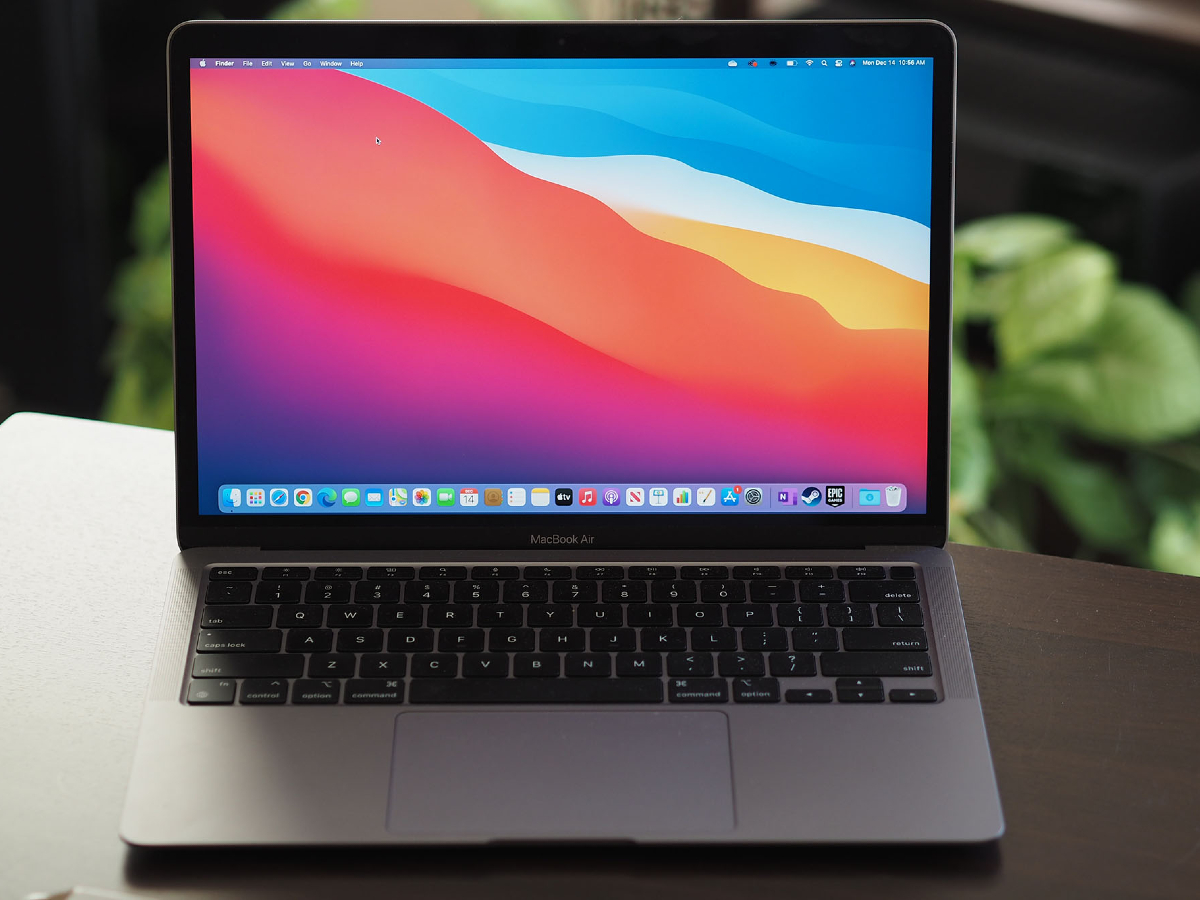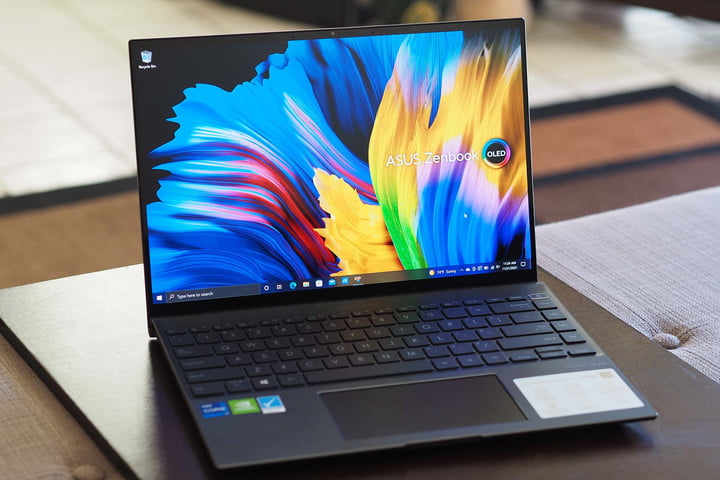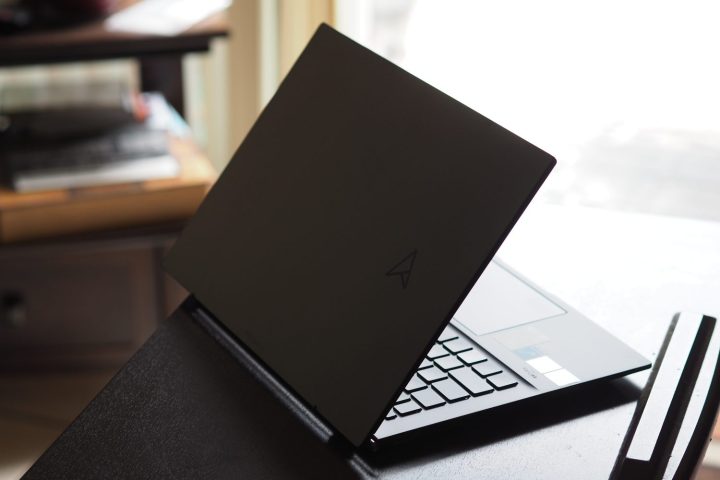
The least expensive MacBook you can buy remains the MacBook Air M1, which Apple is keeping around in spite of a complete redesign with the MacBook Air M2. And there’s good reason. The MacBook Air M1 is among the best laptops that sell for under $1,000.
But it’s not the only great laptop for under $1,000. The Asus ZenBook 14 OLED is also a special machine, offering considerable value at a starting price of $700, including a luscious OLED display. As good as the MacBook Air is, the ZenBook 14 just might have it beat.
Specs
| Asus ZenBook 14 OLED | Apple MacBook Air M1 | |
| Dimensions | 12.34 inches x 8.68 inches x 0.67 inches | 11.97 inches x 8.36 inches x 0.63 inches |
| Weight | 3.06 pounds | 2.8 pounds |
| Processor | AMD Ryzen 5 7530U AMD Ryzen 7 7730U |
Apple M1 |
| Graphics | AMD Radeon graphics | Apple M1 |
| RAM | 8GB 16GB |
8GB 16GB |
| Display | 14.0-inch 16:10 2.8K (2,880 x 1,800) OLED, 90Hz | 13.3-inch 16:10 (2,560 x 1600) |
| Storage | 256GB SSD 512GB SSD |
256GB SSD 512GB SSD 1TB SSD 2TB SSD |
| Touch | Yes | No |
| Ports | 2 x USB-C 3.2 Gen 2 1 x USB-A 3.2 Gen 2 1 x HDMI 2.0 1 x 3.5mm audio jack 1 x microSD card reader |
2 x USB-C 4.0 with Thunderbolt 4 1 x 3.5mm audio jack |
| Wireless | Wi-Fi 6E and Bluetooth 5.2 | Wi-Fi 6 and Bluetooth 5.0 |
| Webcam | 1080p | 720p FaceTime HD |
| Operating system | Windows 11 | macOS |
| Battery | 75 watt-hours | 49.9 watt-hour |
| Price | $700+ | $1,000 |
| Rating | 4.5 out of 5 stars | 4.5 out of 5 stars |
Price and configurations
The MacBook Air M1 is currently priced at the Apple store starting at $1,000 for an 8-core CPU/7-core GPU M1 processor, 8GB of
The ZenBook 14 OLED starts at $700 for an AMD Ryzen 5 7530U CPU, 8GB of
Design
- 1. Apple MacBook Air M1
- 2. Asus ZenBook 14 OLED
Let’s get this one out of the way. If you’re either a Windows or MacOS fan, then your decision is easy. These are both fantastic
If you don’t have a strong preference and don’t have any Windows- or MacOS-specific applications that you need to run, then it’s safe to make your decision between these two
In terms of its design, the MacBook Air M1 maintains the iconic tapered all-aluminum chassis that isn’t used in the more current M2 MacBook Air and exudes quality at whatever price point. MacBooks are the best-built
The MacBook Air M1 also has a better keyboard and haptic Force Touch touchpad. Its switches are snappier and more precise than the ZenBook 14 OLED’s, although that keyboard is more than good enough. While the ZenBook’s touchpad is mechanical, it’s quite comfortable to use and offers an embedded LED numeric keypad for anyone who enters a lot of data.
The ZenBook 14 OLED offers more ports than the MacBook Air M1, including better legacy support. But, the ZenBook’s AMD chipset means there’s no Thunderbolt 4 support, which the MacBook Air M1 offers. The ZenBook 14 OLED also has the more up-to-date Wi-Fi 6E.
Finally, the ZenBook 14 OLED has a 1080p webcam that’s much sharper and brighter than the MacBook Air M1’s 720p version. For security, both
Performance

The ZenBook 14 OLED uses AMD’s low-power Ryzen 5 and 7 CPUs. We tested with the 15-watt 6-core/12-thread Ryzen 5 7530U, and there’s an option for the faster 15-watt, 8-core/16-thread Ryzen 7 7730U. The MacBook Air M1 is available with the 8-CPU/7-GPU core Apple M1 CPU.
In our CPU-intensive benchmarks, the ZenBook 14 OLED was a bit faster in both our Handbrake test that encodes a 420MB video as H.265 and the Cinebench R23 benchmark. The M1’s GPU is better optimized for creative tasks than AMD Radeon graphics, so the MacBook Air M1 is likely to be a bit faster in creative apps like Adobe Premiere Pro.
Both
| Asus ZenBook 14 OLED (Ryzen 5 7530U) |
Apple MacBook Air M1 (M1) |
|
| Geekbench 5 (single / multi) |
1,424 / 6,562 | 1,727 / 7,585 |
| Handbrake (seconds) |
123 | 156 |
| Cinebench R23 (single / multi) |
1,457 / 7,527 | 1,479 / 6,680 |
Display and audio

The MacBook Air M1’s 13.3-inch Liquid Retina IPS display is very good. It’s sharp at a resolution of 2,560 x 1600 and offers above-average brightness, color width and accuracy, and contrast. The ZenBook 14 OLED’s panel, though, is slightly less bright but has wider colors that are also very accurate and incredible contrast that displays inky blacks. It’s also great at displaying high dynamic range (
Asus managed to fit a spectacular display into a very low price, and it wins this category by a country mile. Whether you’re a productivity worker, a creator, or a heavy media consumer, you’ll find the ZenBook 14 OLED’s display to be far superior.
| Asus ZenBook 14 OLED (OLED) |
Apple MacBook Air M1 (Liquid Retina IPS) |
|
| Brightness (nits) |
369 | 389 |
| AdobeRGB gamut | 100% | 100% |
| sRGB gamut | 96% | 79% |
| Accuracy (DeltaE, lower is better) |
1.44 | 1.29 |
| Contrast ratio | 25,660:1 | 1,130:1 |
Both
Portability
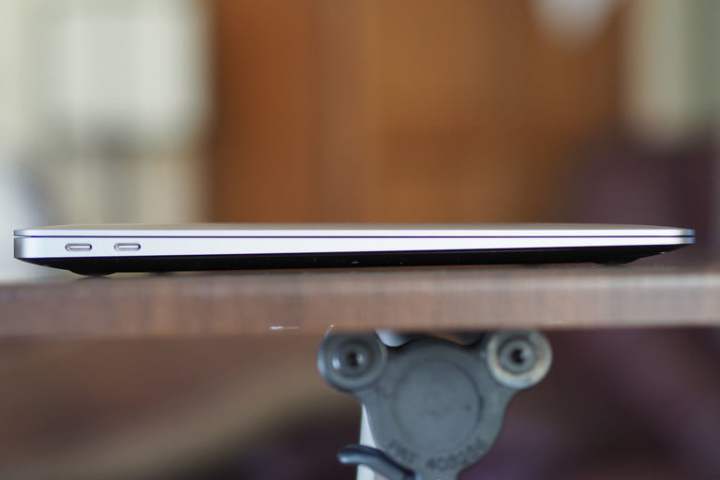
Apple’s Silicon processors, starting with the M1, have been impressively efficient. We’ve seen some of the best battery life ever out of the latest MacBooks, and the MacBook Air M1 is no exception. It performed very well in our battery benchmarks, well above the Windows average.
At the same time, the ZenBook 14 OLED also performed well. It was two hours behind in our web-browsing test and just an hour behind in our video-looping test, and that’s with a power-hungry OLED display. Of course, Asus packed in 75 watt-hours of battery capacity compared to the MacBook Air M1’s 49.9 watt-hours, and that accounts for much of these results.
Nevertheless, the MacBook Air M1 will get you through a full day’s work, but the ZenBook 14 OLED won’t be too far behind.
| Asus ZenBook 14 OLED (Ryzen 5 7530U) |
Apple MacBook Air M1 (M1) |
|
| Web browsing | 12 hours, 13 minutes | 14 hours, 34 minutes |
| Video | 17 hours, 19 minutes | 18 hours, 28 minutes |
The ZenBook 14 OLED is the best laptop for under $1,000
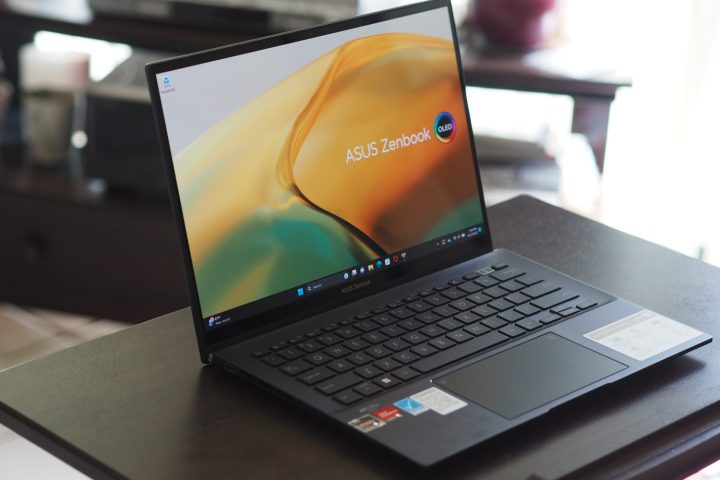
The MacBook Air M1 is a great laptop for the money, providing good performance, excellent battery life, a great display, and solid build quality. But the ZenBook 14 OLED is roughly as fast, also has great battery life, and offers a vastly superior OLED display.
The ZenBook is also less expensive, and you don’t have to go hunting for the best deal. It’s earned its place as the
Editors' Recommendations
- Best Apple deals: Save on AirPods, Apple Watch, iPad, MacBook
- MacBook Pro 16 vs. MacBook Pro 14: The important differences
- Best refurbished MacBook deals: Get a MacBook Air for $140 and more
- Best MacBook deals: Get an Air for $605 and save on M3 MacBook Pro
- The MacBook Air 15 vs. MacBook Pro 14: the easy way to decide
